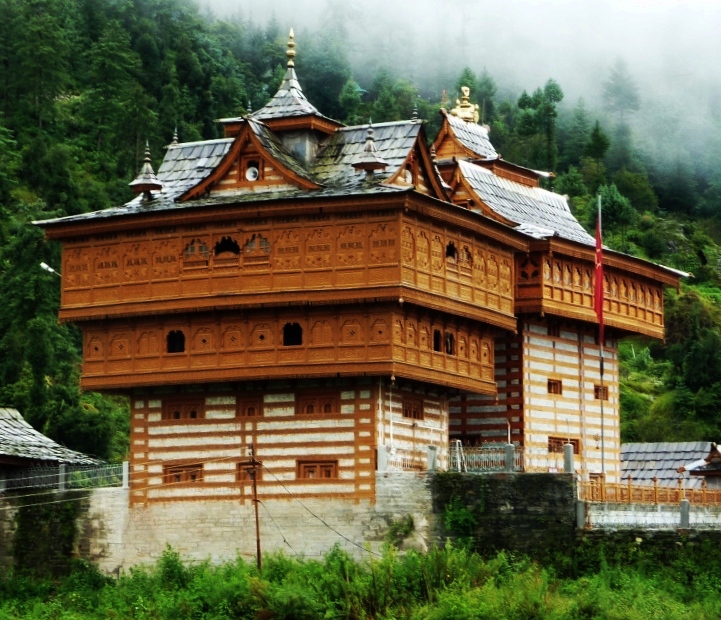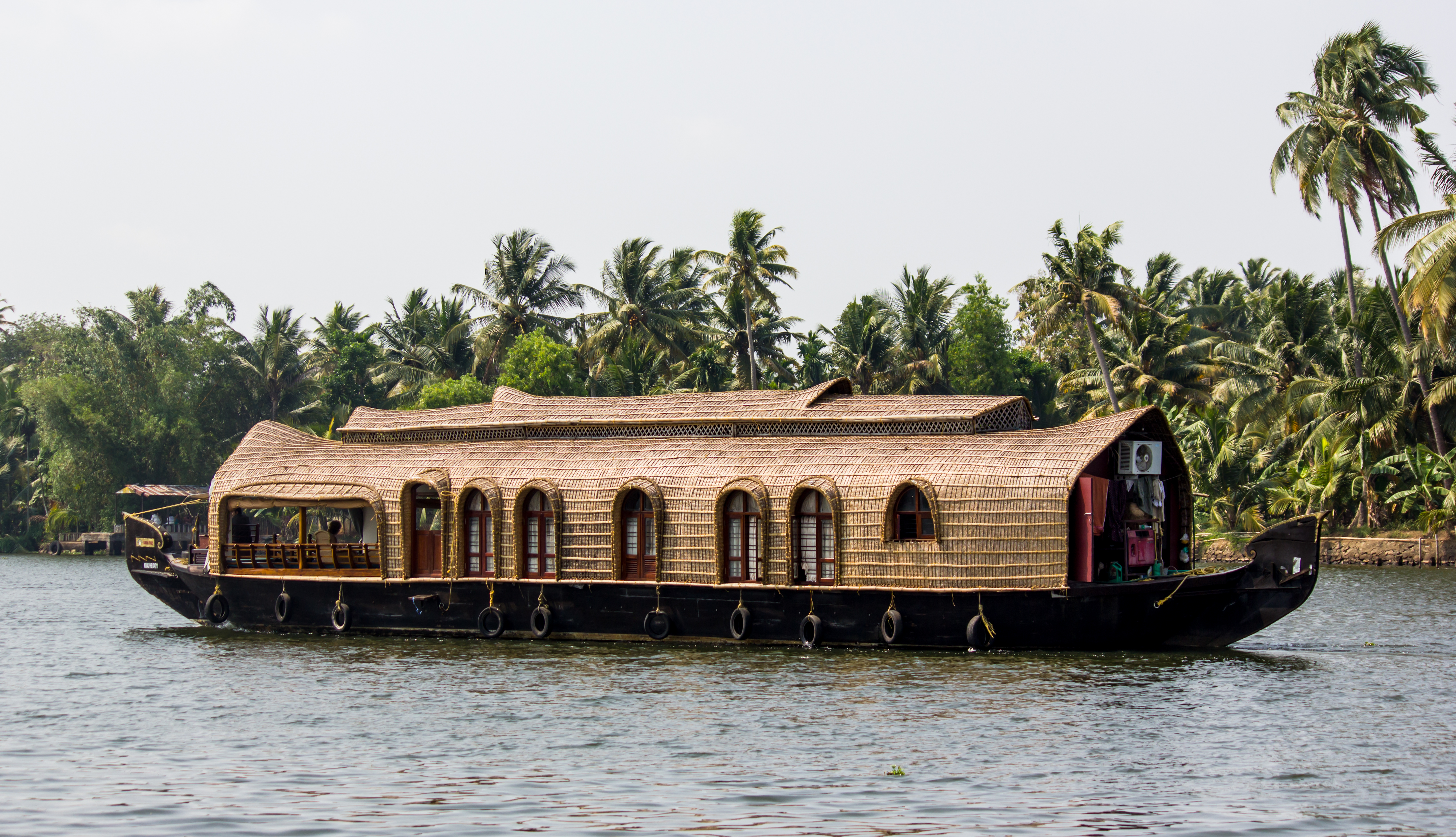Indian vernacular architecture on:
[Wikipedia]
[Google]
[Amazon]

 Indian vernacular architecture the informal, functional architecture of structures, often in rural areas of India, built of local materials and designed to meet the needs of the local people. The builders of these structures are unschooled in formal architectural design and their work reflects the rich diversity of India's climate, locally available building materials, and the intricate variations in local social customs and craftsmanship. It has been estimated that worldwide close to 90% of all building is vernacular, meaning that it is for daily use for ordinary, local people and built by local craftsmen.
The term
Indian vernacular architecture the informal, functional architecture of structures, often in rural areas of India, built of local materials and designed to meet the needs of the local people. The builders of these structures are unschooled in formal architectural design and their work reflects the rich diversity of India's climate, locally available building materials, and the intricate variations in local social customs and craftsmanship. It has been estimated that worldwide close to 90% of all building is vernacular, meaning that it is for daily use for ordinary, local people and built by local craftsmen.
The term
 Indian vernacular architecture has evolved organically over time through the skillful craftsmanship of the local people. Despite the diversity, this architecture can be broadly divided into three categories.
Indian vernacular architecture has evolved organically over time through the skillful craftsmanship of the local people. Despite the diversity, this architecture can be broadly divided into three categories.
File:Pole 42.jpg, Traditional decoration on wooden windows.
File:Pole 38.jpg, Outside of wooden ''pol'' house, Gujarat
File:WOODEN HAVELI.jpg, Wooden carving outside Pol house, brick and wood joinery walls with lime plaster, Gujarat
File:Patwon ki Haveli Jaisalmer.jpg, Rows of sandstone haveli in Rajasthan.
File:Kathavate Wada in Wai.jpg, Wooden ''Wada'' house courtyard, Mahatrastra.
File:ಮನೆ ಅಂಗಳ ತುಳಸಿ ಕಟ್ಟೆ.JPG, Traditional house in southern India with courtyard.
File:Room At Dakshinchitra.jpg, Kitchen in southern India house, lime plaster and stone floor.
File:Chettinad house courtyard.jpg, Merchent Chettinad mansion in Tamil Nadu
File:Chettinad Mansion Kanadukathan.jpg, Row of wooden pillars and carving in Chettinad house, Tamil Nadu
File:Mandawa Sneh Ram Ladias Haveli - Supraporte 4.jpg, Ornamentation on wooden door, Gujarat.
File:Haveli in Phalodi, Rajasthan.jpg, Ornate jharokha windows.
File:Jodhpur Mehrangarh - Palast 4a Jharokha.jpg, Ornate jharoka with 'Do-chala' slooping roof
File:House construction bamboo wall IMG 8946.jpg, Construction of bamboo wall in Northeast India.
File:Naga hut.jpg, Reconstruction of a Naga hut, Nagaland.
What is Vernacular Architecture? (Long definition)
Vernacular Architecture
Vernacular architecture Indian architectural styles

 Indian vernacular architecture the informal, functional architecture of structures, often in rural areas of India, built of local materials and designed to meet the needs of the local people. The builders of these structures are unschooled in formal architectural design and their work reflects the rich diversity of India's climate, locally available building materials, and the intricate variations in local social customs and craftsmanship. It has been estimated that worldwide close to 90% of all building is vernacular, meaning that it is for daily use for ordinary, local people and built by local craftsmen.
The term
Indian vernacular architecture the informal, functional architecture of structures, often in rural areas of India, built of local materials and designed to meet the needs of the local people. The builders of these structures are unschooled in formal architectural design and their work reflects the rich diversity of India's climate, locally available building materials, and the intricate variations in local social customs and craftsmanship. It has been estimated that worldwide close to 90% of all building is vernacular, meaning that it is for daily use for ordinary, local people and built by local craftsmen.
The term vernacular architecture
Vernacular architecture is building done outside any academic tradition, and without professional guidance. This category encompasses a wide range and variety of building types, with differing methods of construction, from around the world, bo ...
in general refers to the informal building of structures through traditional building methods by local builders without using the services of a professional architect. It is the most widespread form of building.
In India there are numerous traditional regional styles, although there is much in common in the styles of the Hindi belt
The Hindi Belt, also known as the Hindi Heartland, is a linguistic region encompassing parts of northern, central, eastern and western India where various Central Indo-Aryan languages subsumed under the term 'Hindi' (for example, by the In ...
in the north. Compared to Hindu temple architecture
Hindu temple architecture as the main form of Hindu architecture has many varieties of style, though the basic nature of the Hindu temple remains the same, with the essential feature an inner sanctum, the ''garbha griha'' or womb-chamber, where ...
and Indo-Saracenic architecture
Indo-Saracenic architecture (also known as Indo-Gothic, Mughal-Gothic, Neo-Mughal, or Hindoo style) was a revivalist architectural style mostly used by British architects in India in the later 19th century, especially in public and government ...
there was traditionally much more use of wood rather than stone, though today brick and concrete are more typical now, and Indian versions of modern styles dominate in recent buildings.
Categories
 Indian vernacular architecture has evolved organically over time through the skillful craftsmanship of the local people. Despite the diversity, this architecture can be broadly divided into three categories.
Indian vernacular architecture has evolved organically over time through the skillful craftsmanship of the local people. Despite the diversity, this architecture can be broadly divided into three categories.Kachcha
A ''kachcha'' is a building made of natural materials such asmud
A MUD (; originally multi-user dungeon, with later variants multi-user dimension and multi-user domain) is a Multiplayer video game, multiplayer Time-keeping systems in games#Real-time, real-time virtual world, usually Text-based game, text-bas ...
plaster, bamboo
Bamboos are a diverse group of evergreen perennial flowering plants making up the subfamily Bambusoideae of the grass family Poaceae. Giant bamboos are the largest members of the grass family. The origin of the word "bamboo" is uncertain, bu ...
, thatch
Thatching is the craft of building a roof with dry vegetation such as straw, water reed, sedge (''Cladium mariscus''), rushes, heather, or palm branches, layering the vegetation so as to shed water away from the inner roof. Since the bulk of ...
and wood
Wood is a porous and fibrous structural tissue found in the stems and roots of trees and other woody plants. It is an organic materiala natural composite of cellulose fibers that are strong in tension and embedded in a matrix of lignin th ...
and is therefore a short-lived structure. Since it is not made for endurance it requires constant maintenance and replacement. The practical limitations of the building materials available dictate the specific form which can have a simple beauty. The advantage of a ''kachcha'' is that construction materials are cheap and easily available and relatively little labor is required.
Pucca
A ''pakka'' is a structure made from materials resistant to wear, such as forms of stone or brick, clay tiles, metal or other durable materials, sometimes using mortar to bind, that does not need to be constantly maintained or replaced. However, such structures are expensive to construct as the materials are costly and more labor is required. A ''pakka'' or ''pacca'' (or sometimes ''pukka'') may be elaborately decorated in contrast to a ''kachcha''.Semi-Pukka
A combination of the ''kachcha'' and ''pukka'' style, the semi-''pukka'', has evolved as villagers have acquired the resources to add elements constructed of the durable materials characteristic of a ''pukka''. Architecture as always evolves organically as the needs and resources of people change. Majority of traditional vernacular architecture falls under semi-''pukka''.Regional variation
Building material depends on location. In hilly country where rocky rubble,ashlar
Ashlar () is finely dressed (cut, worked) stone, either an individual stone that has been worked until squared, or a structure built from such stones. Ashlar is the finest stone masonry unit, generally rectangular cuboid, mentioned by Vitruv ...
, and pieces of stone are available, these can be patched together with a mud mortar to form walls. Finer stonework veneer covers the outside. Sometimes wood beams and rafters are used with slate tiles for roofing if available. Houses on hills usually have two stories, with the livestock living on the ground floor. Often a verandah
A veranda or verandah is a roofed, open-air gallery or porch, attached to the outside of a building. A veranda is often partly enclosed by a railing and frequently extends across the front and sides of the structure.
Although the form ''veran ...
runs along the side of the house. The roof is pitched to deal with the monsoon season and the house may sit on raised platform, plinths or bamboo poles to cope with floods.
On the flat lands, adobes are usually made of mud or sun-baked bricks, then plastered inside and out, sometimes with mud mixed with hay or even cow dung and whitewashed with lime.
Where bamboo is available it is widely used for all parts of the home as it is flexible and resilient. Also widely used is thatch
Thatching is the craft of building a roof with dry vegetation such as straw, water reed, sedge (''Cladium mariscus''), rushes, heather, or palm branches, layering the vegetation so as to shed water away from the inner roof. Since the bulk of ...
from plants such as elephant grass, paddy, and coconut. In the south, clay tiles are used for ''pukka'' roofing while various plant material such as coconut palm is common for the ''Kamchatka''.
Gallery
See also
*Architecture of India
Indian architecture is rooted in its history, culture and religion. Among a number of architectural styles and traditions, the best-known include the many varieties of Hindu temple architecture, Indo-Islamic architecture, especially Mughal ...
Notes
References
*What is Vernacular Architecture? (Long definition)
External links
{{commonscat, Vernacular architecture of IndiaVernacular Architecture
Vernacular architecture Indian architectural styles